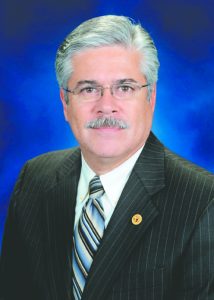Will patient limits help nurses but hurt hospitals?
By Grant Morgan Capitol News Illinois — April 7, 2019SPRINGFIELD — Proponents and opponents of a bill limiting the number of patients per nurse seem to agree on only two things: The quality of patient care in Illinois is a concern, and the nursing shortage is real.
Beyond that is much disagreement on a legislative push to put Illinois alone with California as the only states to set nurse-patient limits.
House Bill 2604, sponsored by Rep. Fred Crespo (D-Hoffman Estates), is headed to debate on the House floor after advancing out of committee last week.
It requires at least one nurse for every four patients in medical-surgical units; every three patients in intermediate care; and every two patients in intensive care.
Such a measure would likely require hospitals to hire more nurses to treat the same number of patients.
But it also would improve the quality of care for patients, said Rebecca Abraham, a nurse for more than 10 years at a Chicago-area hospital.
“Nurses are the most important line of defense against medical errors,” Abraham said in committee hearing testimony last week. “More and more, this important area of defense has been tampered with by poor and unsafe staffing and overwhelming workloads.”
But hospitals and nurse managers warn that better patient care might not be possible if patients cannot access care in the first place.
Illinois faces an estimated shortage of 19,000 nurses over the next 10 years, according to a study last month by the Illinois Economic Policy Institute and the Project for Middle Class Renewal at the University of Illinois at Urbana-Champaign.
Further, a third of the state’s nearly 183,000 nurses are set to retire in the next five years, according to a 2018 survey by the Illinois Nursing Workforce Center.
Citing those numbers, opponents of Crespo’s bill question how hospitals could hire enough nurses to comply with the mandate.
“Because you can’t meet the ratios that the legislators decided, you have to reduce the number of beds, and reduce the number of bays in your emergency department,” said Marsha Prater, chief nursing officer at central Illinois’ Memorial Health System, which takes patients from 18 counties.
Prater said her organization “would love to hire more nurses, but they’re not out there to hire.”
Others, however, suggest the nursing shortage is not due to the number of people willing to be nurses, but rather the number of people willing to remain nurses.
Thirty to 50 percent of new nurses change positions or leave the profession within three years, according to Frank Manzo, policy director for the Illinois Economic Policy Institute.
“While there are many ways to address the shortage, one of the biggest is to improve nurse retention rates,” Manzo said.
To do this, he added, nurses need better staffing levels and working conditions.
Manzo has no estimate on how many additional nurses Illinois hospitals would need to comply with the mandate. Hospital officials and nurse managers warned that an increase could shut hospitals down or force them to reduce services.
According to A.J. Wilhelmi, president and CEO of the Illinois Health and Hospital Association, a quarter of Illinois hospitals are operating “in the red,” or without enough revenue to meet yearly operational costs.
“Illinois can’t meet the mandate without seeing services and other jobs eliminated,” Wilhelmi testified last week.
That problem wouldn’t be helped, Wilhelmi added, by the $25,000-per-day fine for hospitals that don’t follow the proposed ratios.
Somewhat forgotten through the back-and-forth is that Illinois already has a way of determining nurse-to-patient ratios.
The Nurse Staffing by Patient Acuity Act requires hospitals to create committees with at least 50 percent of the seats held by nurses, which determine staffing levels for all types of patients.
The problem is that hospitals don’t adopt the suggestions of nurses on the committees, testified Marti Smith, Midwest director for National Nurses United.
“We have pushed the hospitals to comply with the existing acuity law,” she said. “We have been met with resistance every step of the way.”
Yet hospital managers, like Prater at Memorial Health Systems, say their nurse-to-patient ratios are not far off those proposed in the bill.
Prater says Memorial uses ratios of one nurse to every two intensive care patients, every three or four intermediate care patients, and every five or six medical-surgical patients.
With the current system, Prater argued, Illinois has better health outcomes than California, which adopted nurse-to-patient ratios in 2004.
“We do it one way, they do it another way, and our outcomes are better as a state,” Prater said, referencing a higher percentage of 4- and 5-star hospitals in Illinois than California.
A Massachusetts ballot initiative last November that would have set nurse-patient ratios there was soundly rejected by about 70 percent of voters.
gmorgan@capitolnewsillinois.com








